Samsung Galaxy Tab S8 Ultra vs. iPad Pro (2021)
Can you really pick a clear winner when comparing the two best tablets?
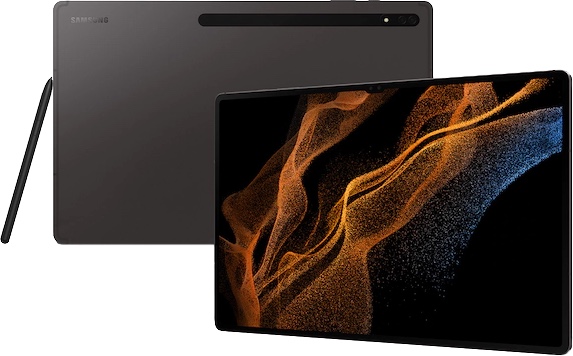
Premium design paired with unique software
With the Galaxy Tab S8 Ultra, you're getting the largest and most powerful Android tablet on the market. Pair that with a one-of-a-kind software experience, and you end up with a tablet that can replace your laptop.
For
- Massive 14.6-inch AMOLED display
- Samsung DeX mode is truly unique
- S Pen included
- Expandable storage via microSD card
Against
- Expensive
- Limited third-party keyboard case options
- RAM is determined by your storage
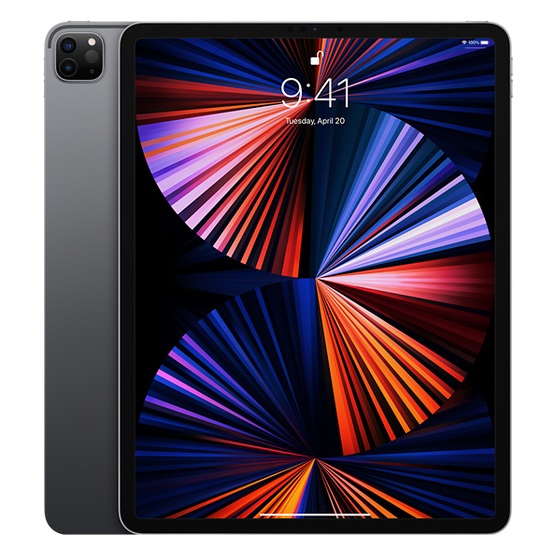
Arguably the best tablet overall
Apple's iPad Pro features a desktop-class processor and a Mini-LED display combined with Apple's industrial design. The software experience still needs some help for power users, but it's still an incredible tablet.
For
- Mini-LED display is magnificent
- Third-party accessories are more plentiful
- Software support is expected for at least the next five years
- You don't need to be in Apple's ecosystem to enjoy this tablet
Against
- Expensive
- Limited software experience
- Apple Pencil is not included
- No expandable storage
Much like the smartphone market, the tablet market is largely dominated by Samsung and Apple. This holds true regardless of whether you're looking for an entry-level option, or if you want the most powerful tablet to replace your laptop. If that's the case, then you'll need to see how the Galaxy Tab S8 Ultra holds up against the iPad Pro.
While Apple has a smaller iPad Pro, with an 11-inch Liquid Retina display, this comparison mainly focuses on the 12.9-inch iPad Pro. Not only is it the largest tablet that Apple makes, but it also offers more of a direct comparison with Samsung's Galaxy Tab S8 Ultra compared to its smaller counterpart.
Samsung Galaxy Tab S8 Ultra vs. iPad Pro (2021): Hardware, design, and display
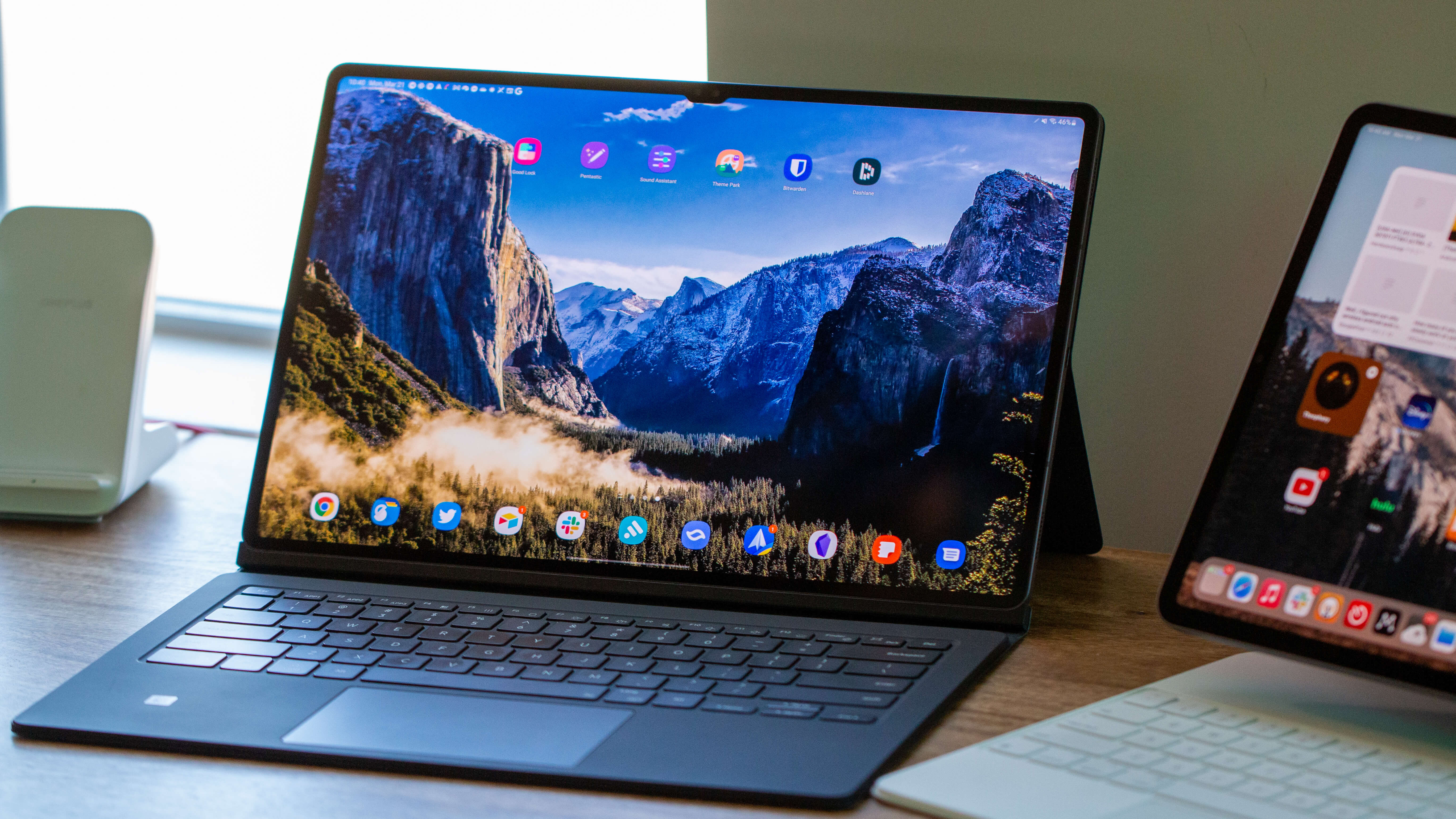
If you’re looking for the most impressive hardware outside of smartphones, then you can’t go wrong with either the Galaxy Tab S8 Ultra or the iPad Pro (2021). Sleek, aluminum chassis house incredible displays, along with a few extra goodies to help improve your tablet experience regardless of what platform you find yourself wanting or using.
The Galaxy Tab S8 Ultra is the largest tablet in Samsung’s lineup, coming in with a jaw-dropping 14.6-inch AMOLED display. It also offers a variable 120Hz refresh rate to go along with the 2960x1848 resolution, resulting in a beautiful media consumption and content creation device. It’s a bit unwieldy to hold, but that’s to be expected from a device that is larger than many of the best Chromebooks and laptops.
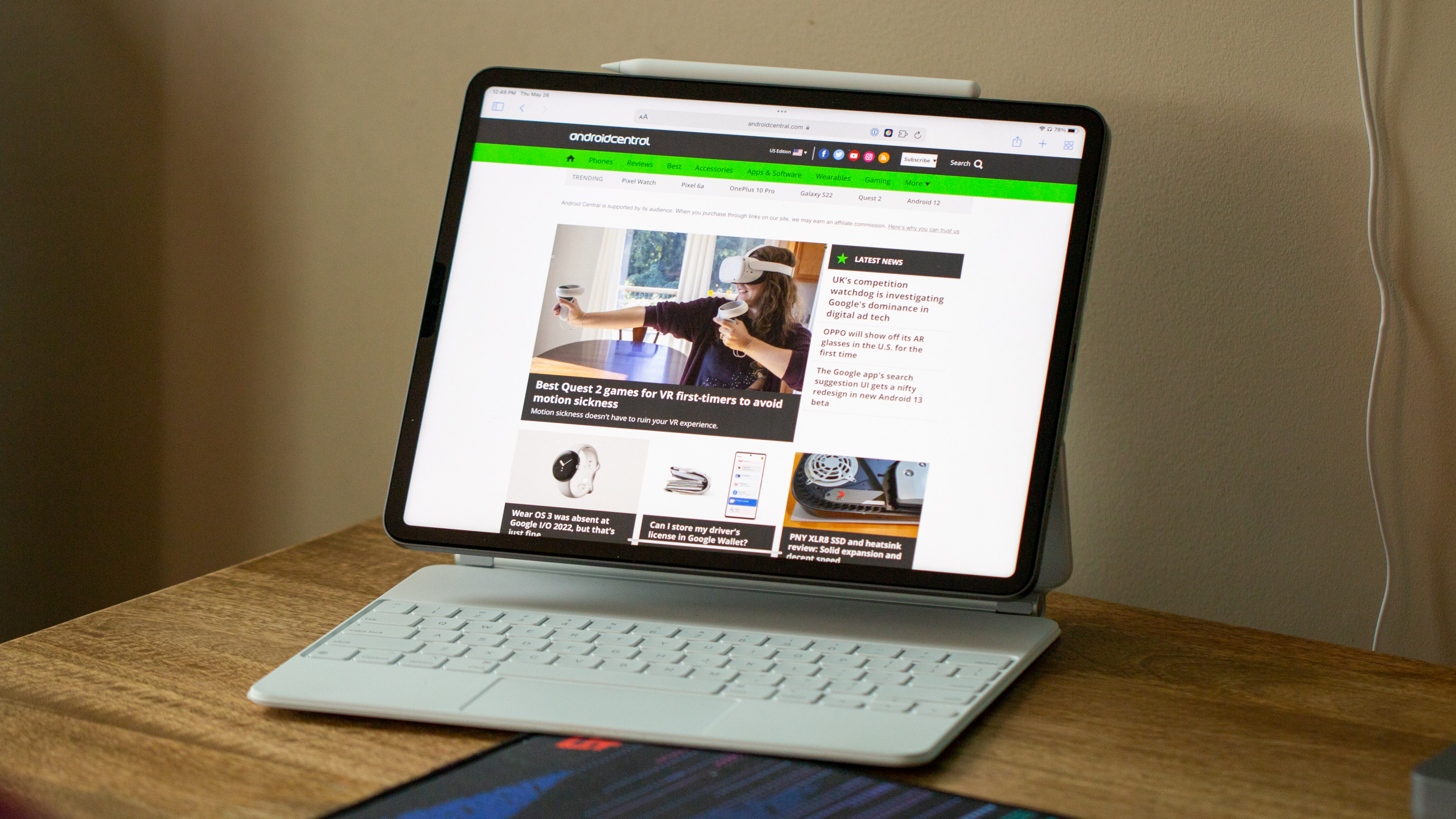
As for the iPad Pro (2021), Apple is sticking with its recent trend of offering the device in two different sizes; with an 11-inch model to go along with the 12.9-inch variant. The smaller of the two is no slouch, but relies on an LCD display panel that can’t quite match up to the AMOLED panel used on Samsung’s tablet. However, the 12.9-inch iPad Pro introduced Apple’s first Mini-LED display, while maintaining the same ProMotion 120Hz technology that was just integrated into the iPhone 13 Pro and Pro Max.
| Header Cell - Column 0 | Samsung Galaxy Tab S8 Ultra | iPad Pro 11-inch (2021) | iPad Pro 12.9-inch (2021) |
|---|---|---|---|
| Display | 14.6-inch Super AMOLED w/ 120Hz | 11-inch Liquid Retina IPS LCD w/ 120Hz | 12.9-inch Liquid Retina XDR mini-LED LCD w/ 120Hz |
| Processor | Qualcomm Snapdragon 8 Gen 1 | Apple M1 | Apple M1 |
| RAM | 8GB / 12GB / 16GB | 8GB / 16GB | 8GB / 16GB |
| Storage | 128GB, 256GB, 512GB | 128GB, 256GB, 512GB, 1TB, 2TB | 128GB, 256GB, 512GB, 1TB, 2TB |
| Expandable Storage | Yes (up to 1TB via microSD) | No | No |
| Connectivity | Wi-Fi 6, Bluetooth 5.0, 5G (optional) | Wi-Fi 6, Bluetooth 5.0, 5G (optional) | Wi-Fi 6, Bluetooth 5.0, 5G (optional) |
| Battery | 11,200mAh | 7,538mAh | 10,758mAh |
| Front Cameras | 12 MP (wide) 12 MP, 120˚ (ultrawide) | 12 MP, 122˚ (ultrawide) | 12 MP, 122˚ (ultrawide) |
| Rear Cameras | 13MP (wide), 6MP (ultrawide) | 12MP (wide), 10MP (ultrawide), TOF LiDAR (depth) | 12MP (wide), 10MP (ultrawide), TOF LiDAR (depth) |
| Stylus Included | Yes, S Pen | No | No |
| Works with Keyboard | Yes (purchased separately) | Yes (purchased separately) | Yes (purchased separately) |
| Charging | USB-C 3.2, 45W | USB-C 4 (Thunderbolt 4), 18W | USB-C 4 (Thunderbolt 4), 18W |
| Dimensions | 12.85 x 8.21 x 0.22 inches | 9.75 x 7.03 x 0.23 inches | 11.05 x 8.46 x 0.25 inches |
| Weight | 1.60 lb | 1.03 lb | 1.50 lb |
| Colors | Graphite | Silver, Space Gray | Silver, Space Gray |
By using Mini-LED, Apple’s larger iPad Pro is able to provide a more enjoyable experience when it comes to viewing HDR content, even if it’s barely edged out by Samsung’s bright and vibrant OLED panel. Apple also gains an edge here in the refresh rate segment, as it seems that iPadOS is just better optimized for 120Hz refresh rates. That’s not to say that Samsung’s implementation is bad by any means, but if you were to use both of these tablets, the UI feels a bit more fluid on the iPad.
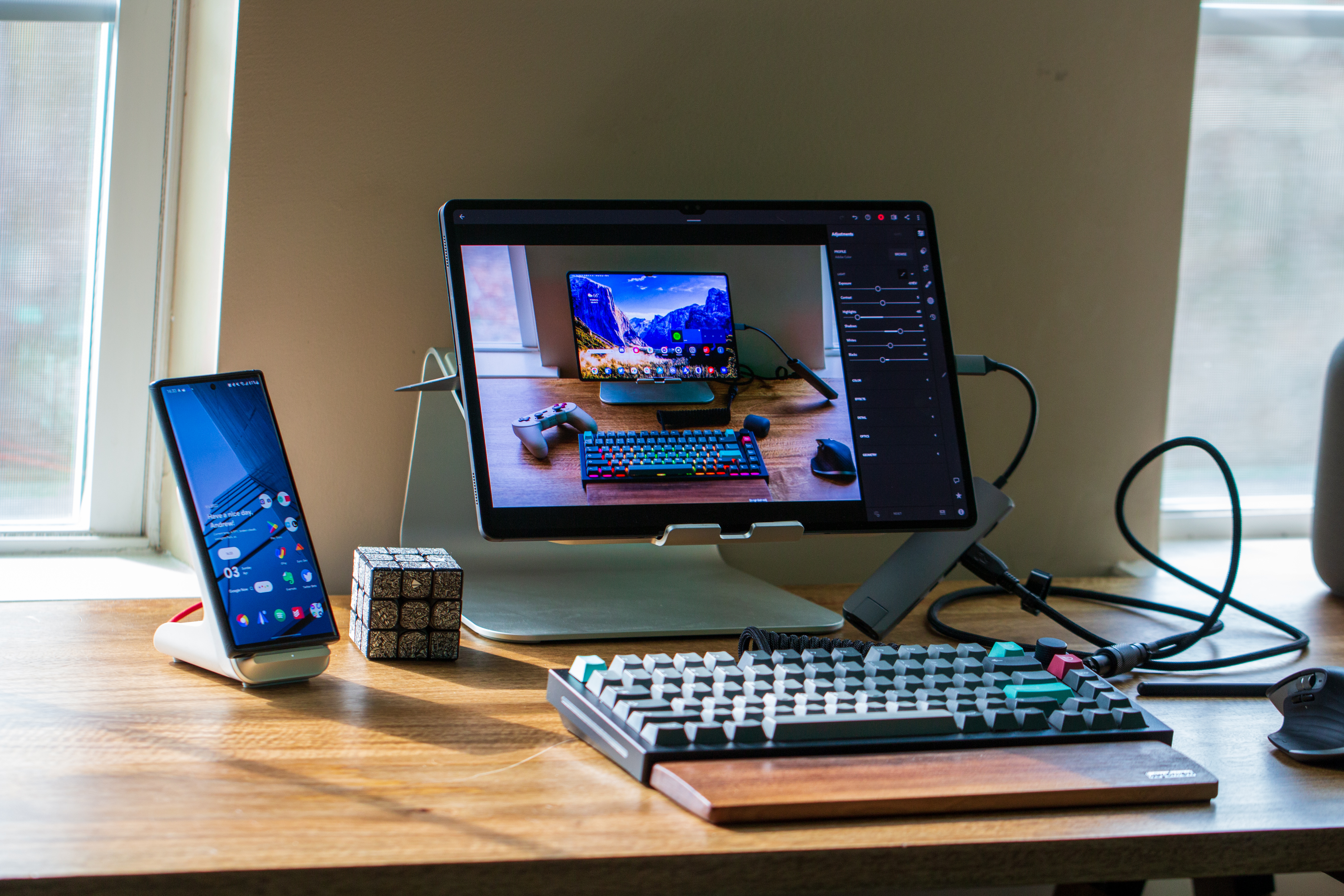
All three of the tablets we’re looking at here offer a single USB-C port for charging, four stereo speakers, and optional cellular connectivity configurations. Samsung gains an edge as it uses Bluetooth 5.2, while both iPad Pro models are still using Bluetooth 5.0. We also have magnetic connectors across all three models, which makes it easy to magnetically attach the various first-party accessories that are available.
Apple took things even further, as those USB-C ports found on the bottom of the iPad Pro models offer DisplayPort compatibility courtesy of Thunderbolt 4, as opposed to the USB-C 3.2 Gen 2 offered by the Tab S8 Ultra. The end result is that the iPad Pro (2021) is now capable of transfer speeds of up to 70MB/s, vastly outperforming the 10MB/s speeds of Samsung’s tablet.
Samsung Galaxy Tab S8 Ultra vs. iPad Pro (2021): Cameras
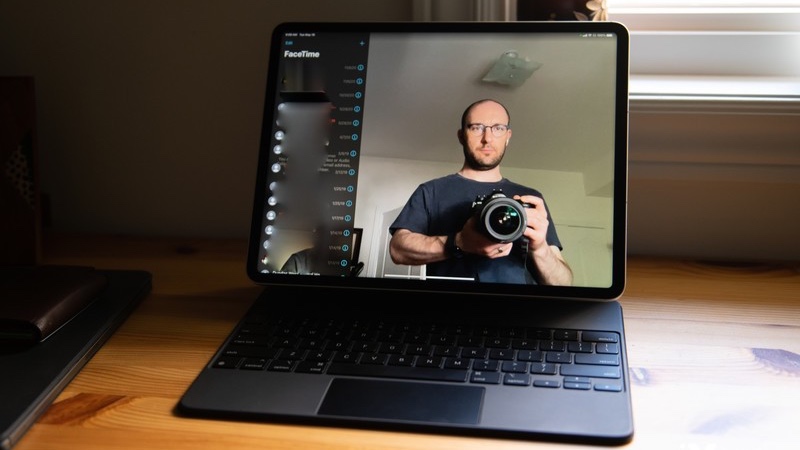
It might be a bit weird to separate cameras into its own section, but that’s for a good reason. For years, iPad Pro fans have been waiting for the day that Apple moves the selfie camera into the long edge of the display. Most of the time, we use our tablets in landscape mode anyways, but the camera has remained at the “top” of the screen when holding the iPad vertically.
Samsung finally deleted all of the memes to join the notch crowd with the Tab S8 Ultra. This tiny notch protrudes ever-so-slightly from the bezel, in order to house a 12MP wide-angle lens and a 12MP ultra-wide sensor. While both iPad Pro models sport a single 12MP lens, they are limited to just 1080p, whereas Samsung is making use of a 4K lens. This results in better image quality for the Tab S8 Ultra, which is important in a world where not everyone is back at the office just yet.
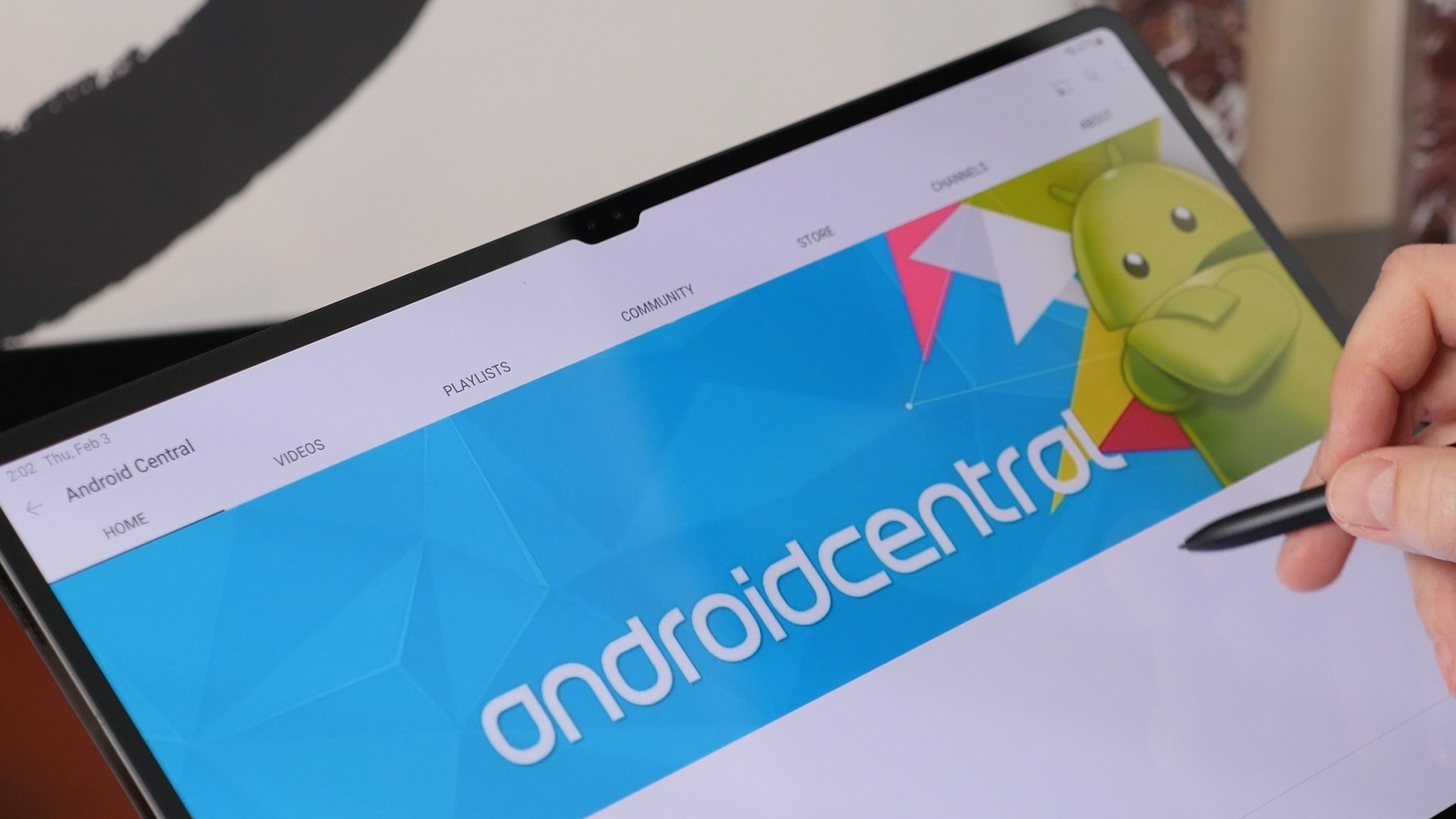
There’s a saying from Pablo Picasso: “Good artists copy, great artists steal.” And when it comes to the Tab S8 Ultra, it’s a bit of both when it comes to the implementation of Auto Framing. This feature aims to ensure that you remain in the center of the frame, even if you’re moving around. But the end result is much less impressive than you might have hoped, as the camera just tries to over-correct. Even the slightest movement seems to trigger the Auto Framing feature, which could make your counterparts on a video call feel like they’re on a ship at sea.
Apple’s implementation of a similar feature made its debut alongside the 2021 iPad Pro and is known as Center Stage. It too aims to keep you centered in the frame, but uses the single ultra-wide camera to “pan out” in the event that you move further away from the camera, or if someone else enters the frame.
Auto Framing on the Tab S8 Ultra is cool, but you might end up making your video call attendees feel like they're on a ship.
We found that while this feature could be rather useful and downright helpful, Apple’s Center Stage just slightly edges ahead. When on video calls, the iPad Pro doesn’t move around too much and doesn’t try to over-correct in the event that you’re just sitting at the desk and reach over to grab a drink. Hopefully, Samsung can tweak the Auto Framing functionality via future software updates, but we’ll have to just wait it out to see.
Samsung Galaxy Tab S8 Ultra vs. iPad Pro (2021): Performance
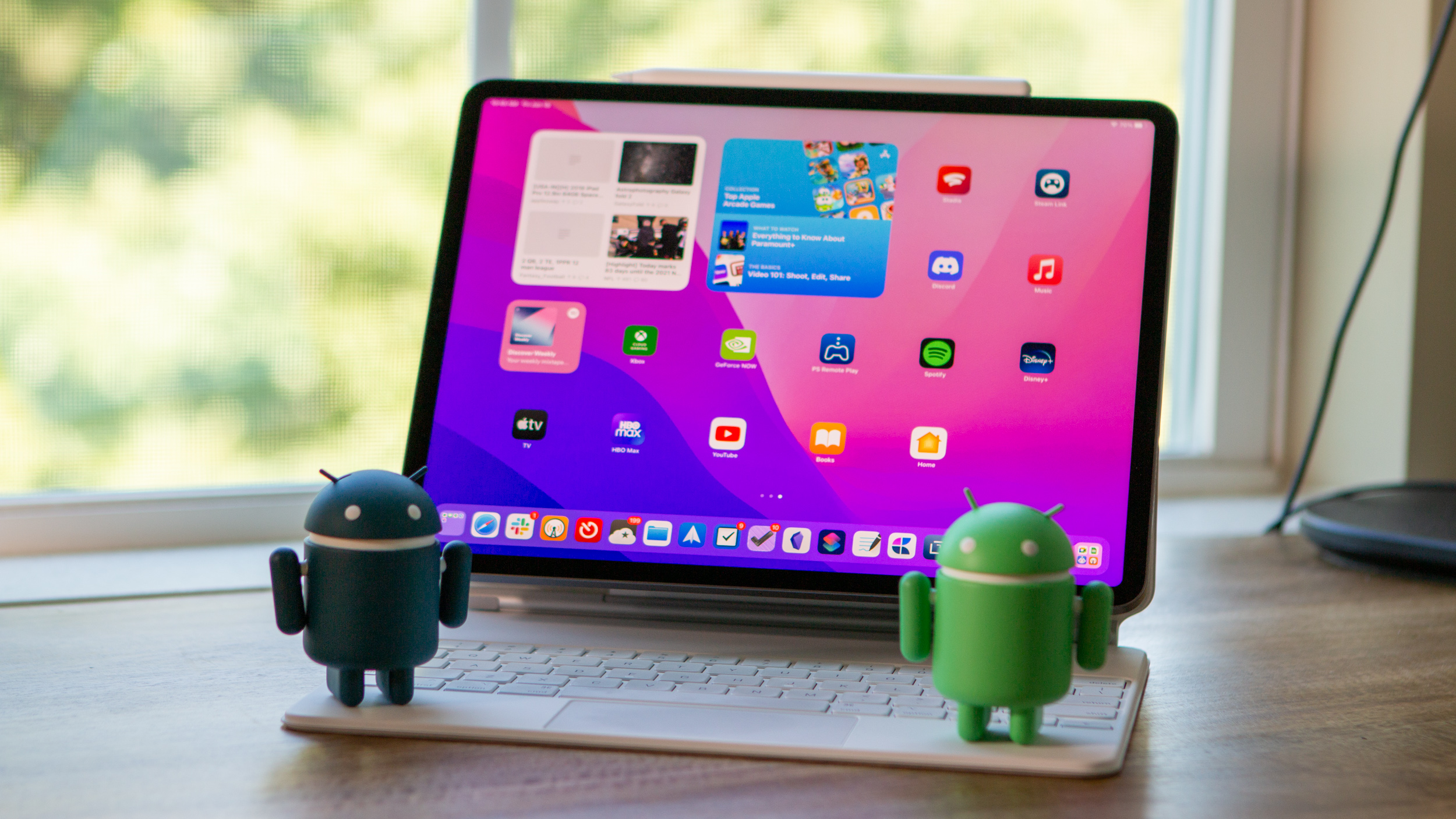
Just like comparing the Galaxy S22 Ultra vs iPhone 13 Pro Max, comparing the performance of the Galaxy Tab S8 Ultra vs iPad Pro (2021) is a power-to-power comparison. Samsung makes use of the Snapdragon 8 Gen 1 chipset, which is at the helm for many of the best Android phones. But Apple took a different approach with the 2021 iPad Pro, as it now uses the same in-house M1 chip that has taken the laptop and desktop markets by storm.
Paired with the Tab S8 Ultra, there are three different RAM and storage configurations to choose from. The base model is equipped with 8GB of RAM and either 128GB or 256GB of storage, while the 12GB and 16GB versions are available with either 256GB or 512GB of storage. While the iPad Pro may top out with a 2TB option, Samsung gains a big advantage here, as there’s actually a microSD card slot built into the frame of the Tab S8 Ultra.
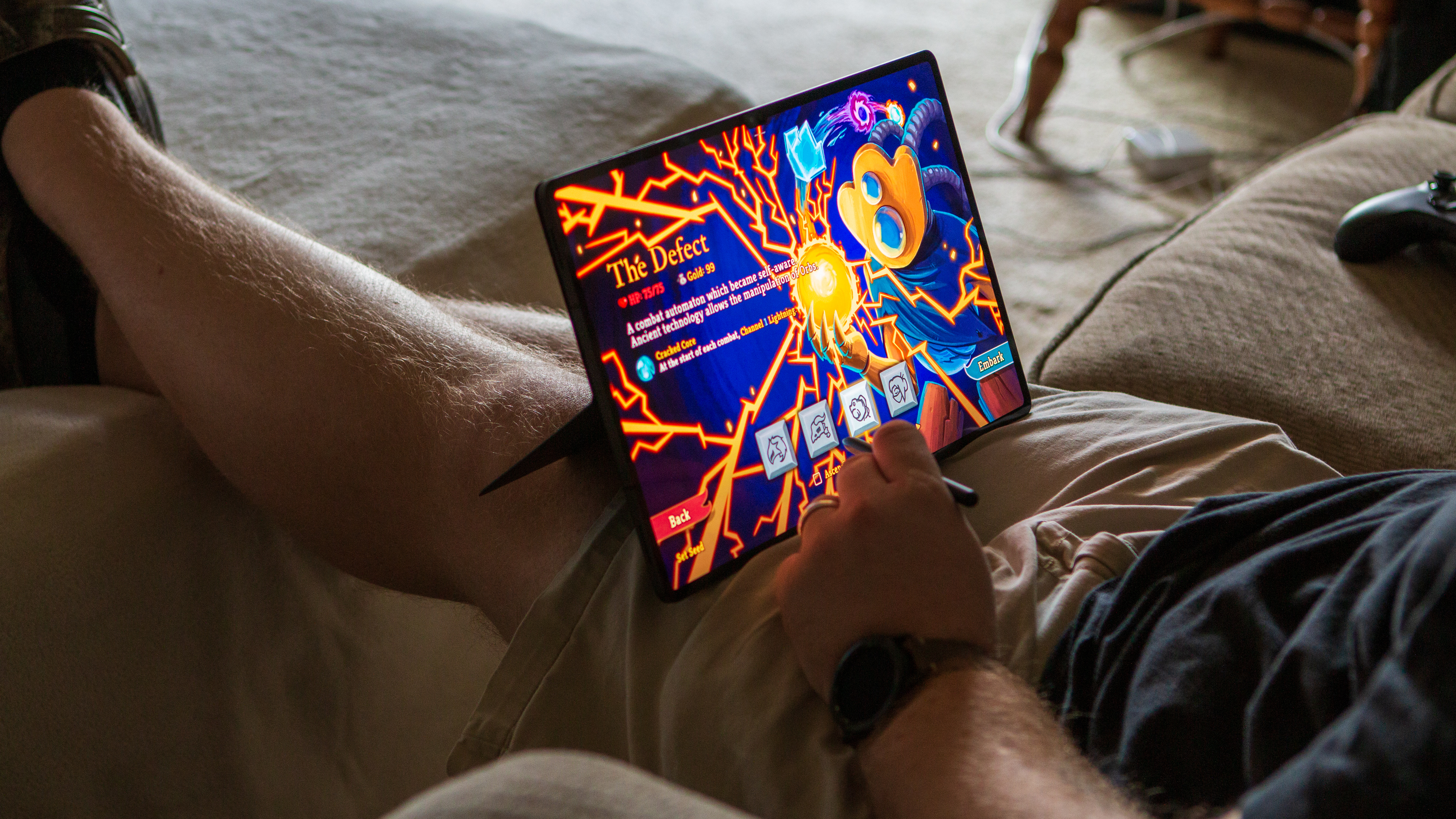
On the iPad Pro side of things, Apple is also using 8GB of RAM for its base 128GB configuration. You can also upgrade to 256GB or 512GB of storage with the 8GB model, but Apple finally offers the iPad Pro with 16GB of RAM. However, you’ll need to spring for the 1TB or 2TB storage models in order to enjoy it. Oh, and there’s no middle ground with Apple, as it’s just 8GB or 16GB.
So Apple packed its new desktop-class SoC into its most powerful tablet, how does that translate? In terms of benchmarks, it’s pretty darn impressive, with the iPad Pro generating a 1675 single-core score and 6960 multi-core score on Geekbench. As for the Tab S8 Ultra and its Snapdragon 8 Gen 1, Geekbench tests resulted in an 1160 single-core score and a 3288 multi-core score. So it would seem as though the Tab S8 Ultra just falls flat, right?
Well, that’s the thing with Apple’s M1 chip compared to the Snapdragon 8 Gen 1 — it comes down to software.
Samsung Galaxy Tab S8 Ultra vs. iPad Pro (2021): Software
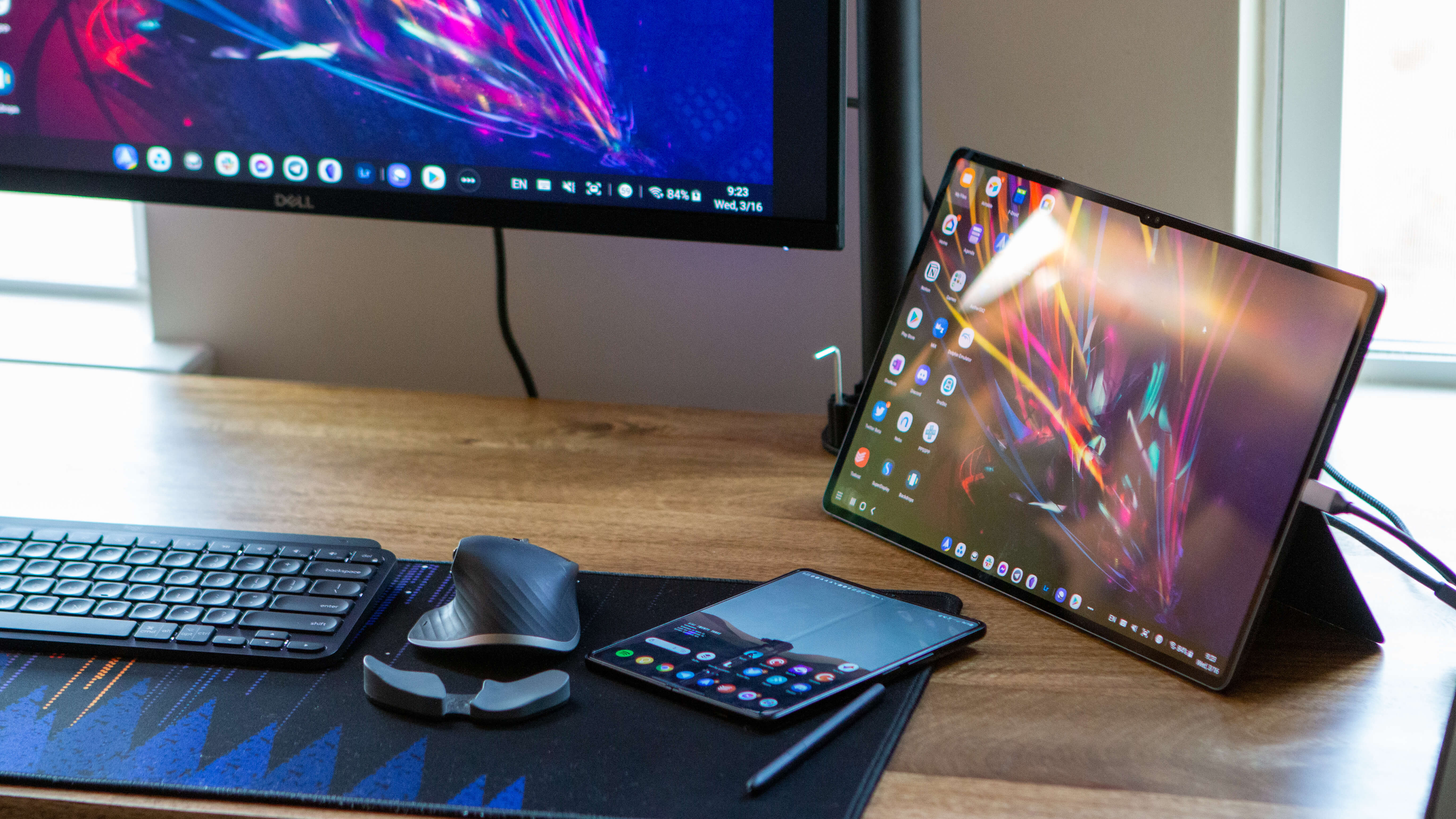
This is the biggest “bugaboo” when it comes to the iPad Pro. For a device that is so powerful and sleek, while being packed with internals that rival and outperform some of the best computers, iPadOS just isn’t enough anymore. Apple has stuck with the archaic one (or two) window approach, allowing you to only work with up to two apps in split-screen mode.
The interface that you get with Android on the Tab S8 Ultra isn’t much better, but with Samsung DeX, you can transform the Galaxy Tab S8 Ultra into a multi-tasking powerhouse. Most apps can be used in windows, and you’ll find a desktop experience similar to what you would on a traditional laptop. All the while being extremely portable, sporting an incredible display, and all the bells and whistles you could want.
Sure, you can’t go the Linux on Chromebook route and install Linux apps on your Android tablet. But pretty much all of the best Android apps are on board here, so you can split-screen, use multiple windows, and pretty much do anything else that you set your mind to.
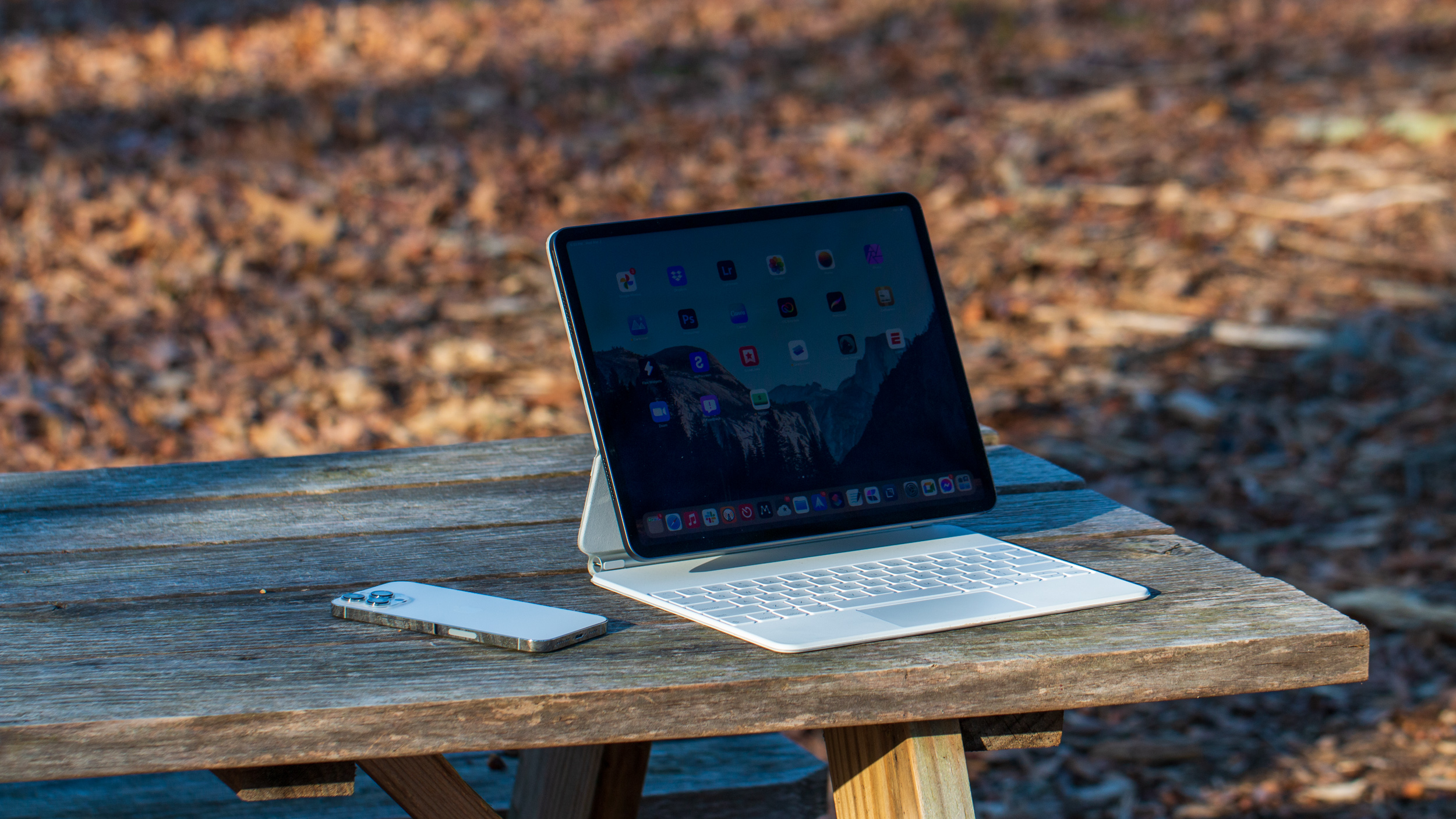
All the while, the iPad Pro remains an incredibly powerful tablet that continues to be hampered by the software experience. And we aren’t talking about the app selection or choices, as Apple’s App Store arguably offers some of the best apps that we have ever seen. But being limited in the functionality of a “Pro” device really hampers what you can do on a day-to-day basis.
This gets taken a step further when it comes to connecting any of these tablets to a monitor. Samsung’s DeX Mode takes over, allowing you to plug in the tablet, just like you would a laptop, in order to get the same desktop-like experience on an even bigger screen.
It's long past the time for Apple to provide a Pro-level software experience with its Pro hardware.
Meanwhile, the iPad Pro and its Thunderbolt 4 port is just an over-powered single-app solution. There are workarounds thanks to apps like ShiftScreen, but that comes with a slight learning curve, and you might not have even heard of it before.
Perhaps this all changes with iPadOS 16, but that just becomes a case of “don’t buy something for its potential, buy it for what it can do.” And honestly, the Tab S8 Ultra offers a much more versatile software experience.
Samsung Galaxy Tab S8 Ultra vs. iPad Pro (2021): Accessories

In most comparisons, there really wouldn’t be much of a discussion, but there are two big reasons why we’re adding it here. You won’t find an included charger in either of these boxes, leaving only the tablet, some regulatory paperwork, and a charging cable. But Samsung also includes the S Pen in the box, which has again been updated for the Galaxy Tab S8 Ultra.
This new S Pen can magnetically attach to the glass window on the back of the tablet, which will simultaneously charge the stylus when you’re not using it. Samsung also improved latency, bringing the S Pen down to an incredible 2.8ms, which is a massive improvement over the 9ms of latency found with the Galaxy Tab S7 and S7 Plus.
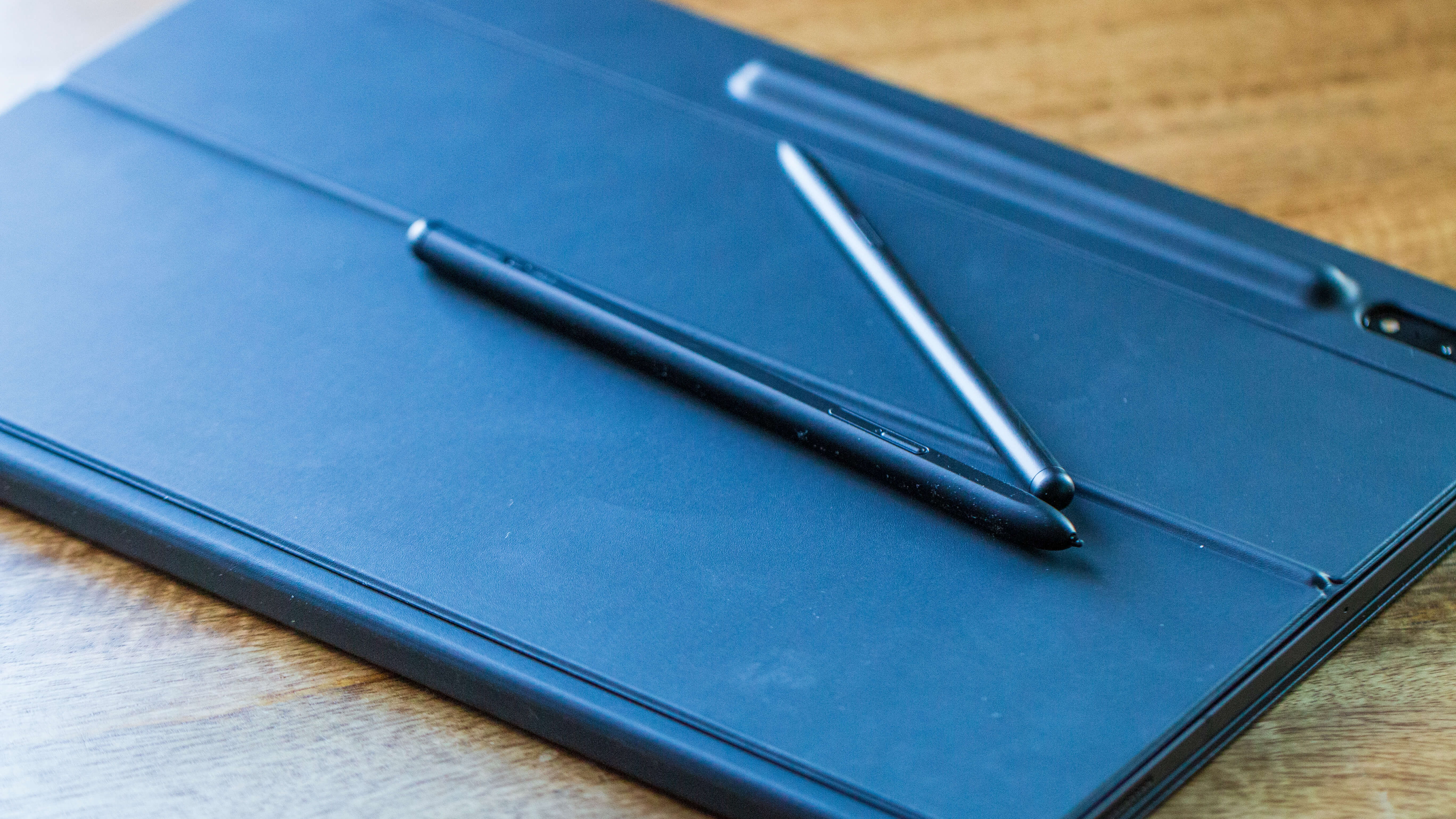
As we all know by now, Apple also offers a stylus for the iPad in the form of the Apple Pencil. This pen also magnetically attaches to the iPad Pro, while charging it at the same time. But instead of being somewhat awkwardly placed on the back of the tablet, the Apple Pencil is housed on the top of the tablet (when in landscape view). This makes it easier to grab when you need to sign a document or want to jot down some notes, as opposed to reaching behind the tablet to grab it.
When it comes to latency for the Apple Pencil, the company’s second-gen Pencil launched with 20ms latency, which was fine back in when it was released. But after the update to iPadOS 13, this was reduced to 9ms, matching the same latency we saw with the S Pen from the Galaxy Note 20. It was rather impressive to see Apple lower the latency just through software, but it might finally be time for an updated version to arrive with even lower latency.
While Samsung gets a lot of praise for including the S Pen in the box, there’s something else to be said about its Keyboard Cover. Neither Apple nor Samsung includes these in the box, and both the Magic Keyboard for iPad and Book Cover Keyboard for the Tab S8 Ultra are priced at $350.
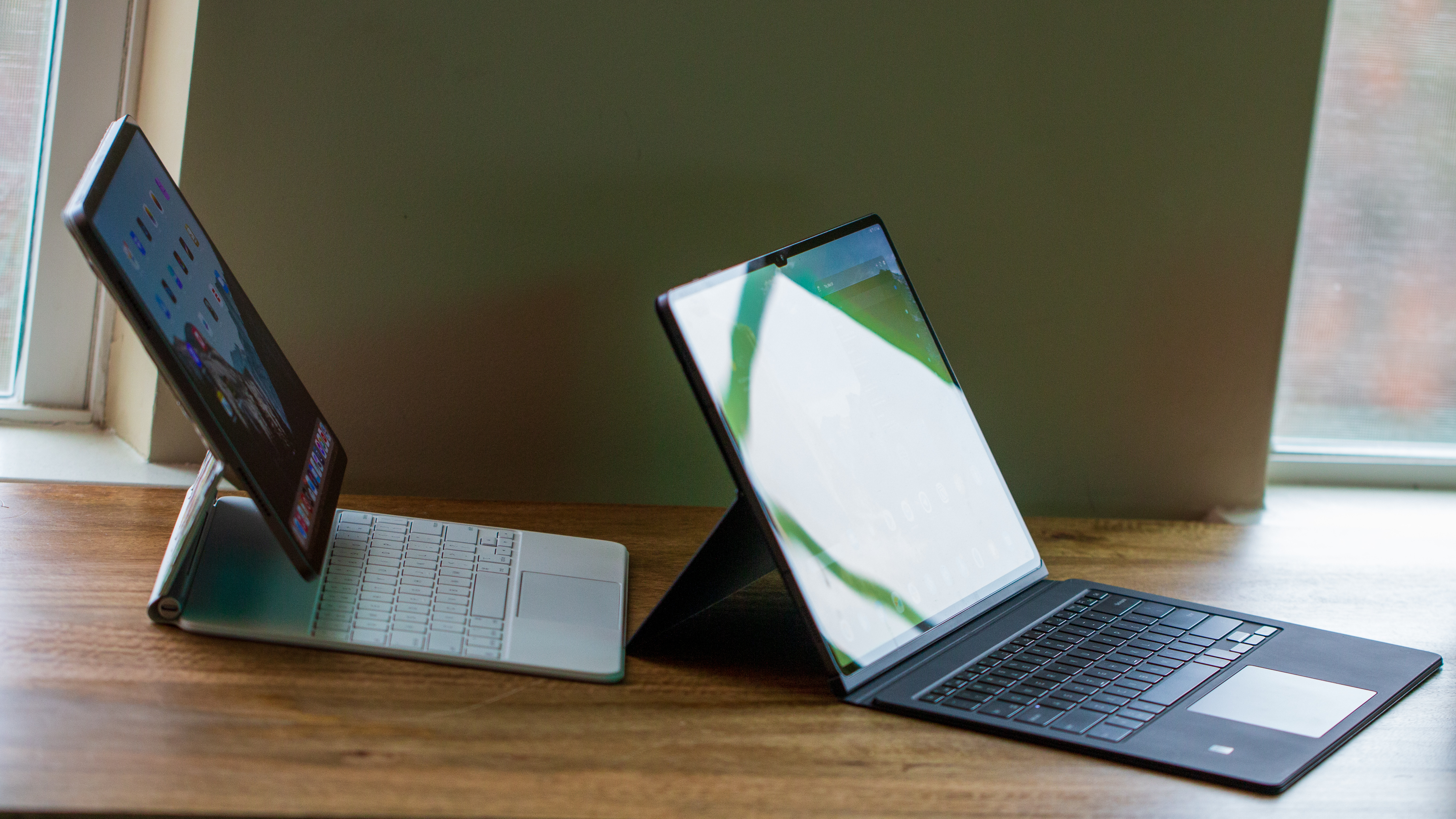
If you want to go outside of the first-party accessories, you’ll find two very different stories. Looking for the best Galaxy Tab S8 Ultra keyboards will result in a bunch of random third-party solutions that don’t really match the design aesthetic that Samsung has created and cultivated. Very few, if any of the options are appealing at all, so you might find yourself just slapping a folio case on the tablet and using a Bluetooth keyboard like Logitech’s MX Keys Mini.
On the other hand, not only is the Magic Keyboard a more practical and enjoyable solution, but there are also quite a few solid third-party keyboard case solutions available. The first that comes to mind is Brydge’s MAX+ Keyboard Case with trackpad, while Logitech has also released comparable options like the Logitech Combo Touch case.
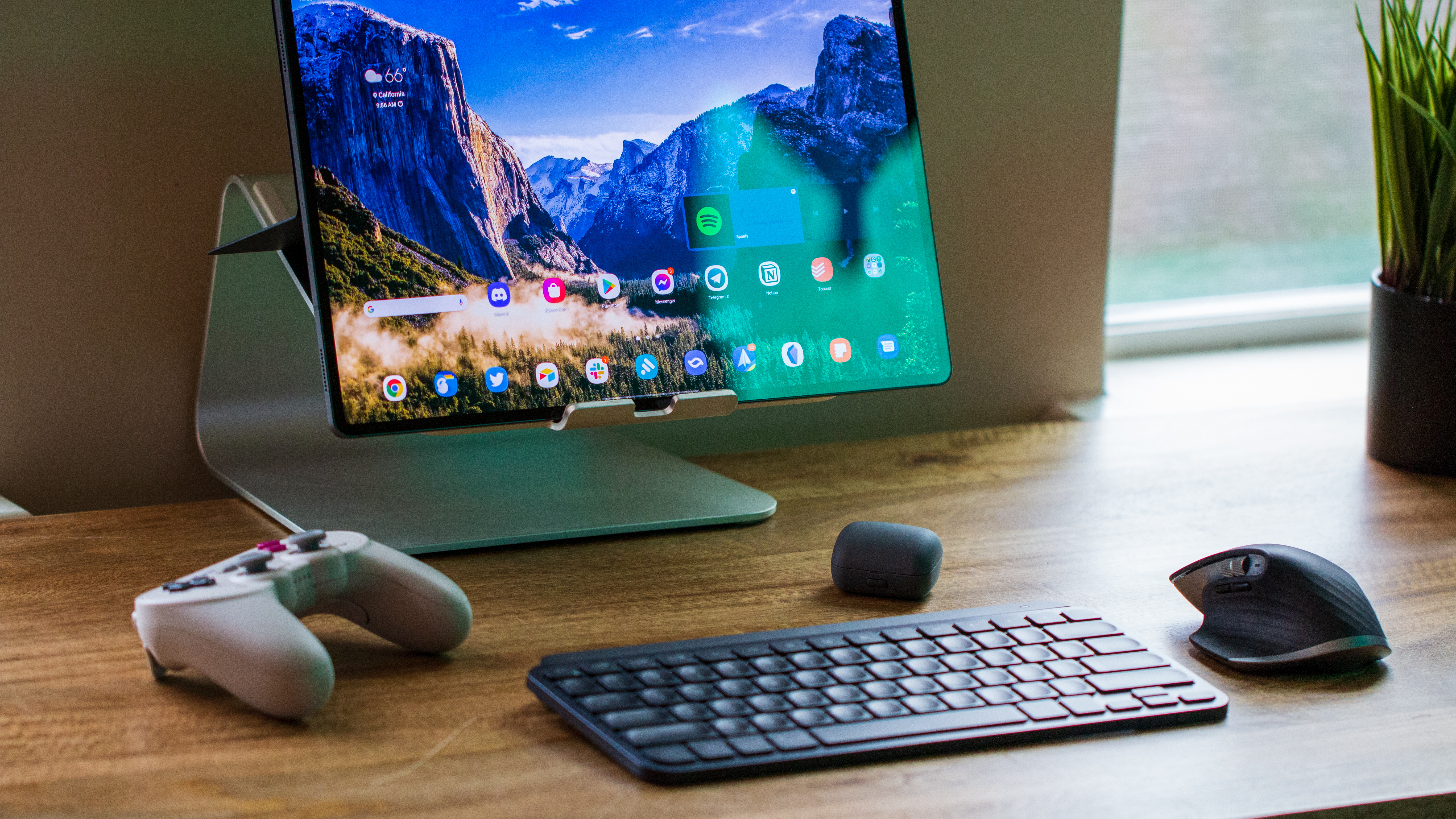
It’s really a shame that we don’t have more reliable and frankly better, third-party accessory options for the best Android tablet. That’s not to say you won’t find something suitable, but Samsung’s own Book Cover Keyboard is really only a great solution if you plan on working on a desk or at a table. The “lap-ability” is subpar, to say the least, and just isn’t an enjoyable experience. The keyboard portion just flexes too much, and actually registers trackpad clicks if you press too hard on one side or the other.
Samsung Galaxy Tab S8 Ultra vs. iPad Pro (2021): There's no wrong choice
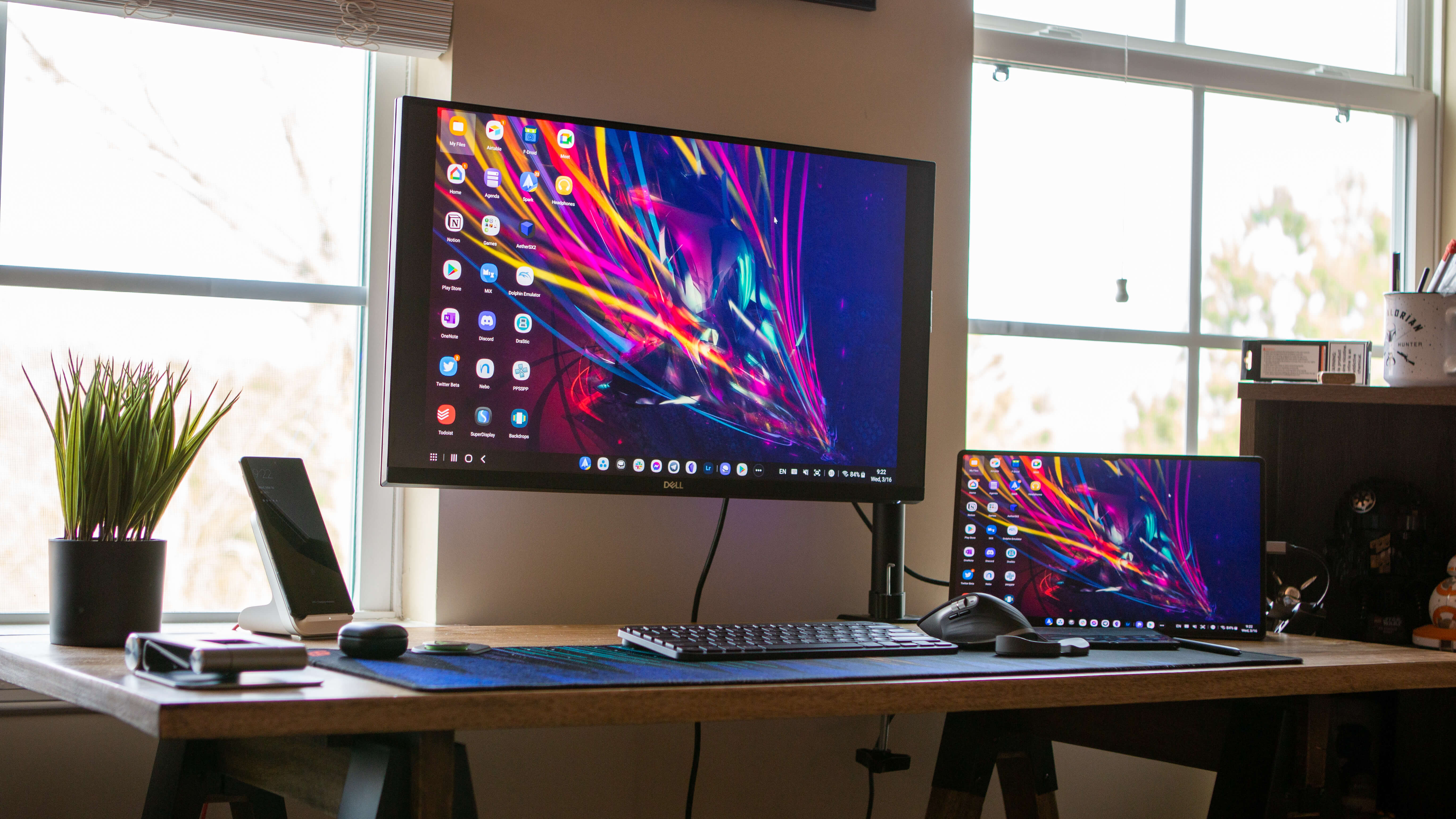
There’s a lot that goes into picking the best tablet, and even more to consider if you’re looking for a laptop replacement. Both the Galaxy Tab S8 Ultra and iPad Pro (2021) are capable of solving the same problem of wanting a more portable and powerful “computer” compared to using a laptop. There’s more than enough power under the hood for each of these tablets, so you’ll be able to get most, if not all, of your work done from wherever you are.
While it’s easy to sit here and say that the iPad Pro is the obvious choice from a performance and accessory standpoint, the software experience can really make or break everything. Samsung’s implementation of DeX, combined with the ability to actually plug in your tablet to a larger monitor and use it as you would expect, gives the Tab S8 Ultra the edge here.
Outside of that, the iPad Pro is easily the best choice, as apps are better optimized for iPadOS, and there are multi-tasking features to take advantage of, albeit coupled with a learning curve. And while there’s hope that iPadOS 16 could change things for the future, the real software advantage comes in the way of support. Apple’s M1 chip will be around for years to come, and that means the iPad Pro will be supported along the way.

The beefiest Android tablet
Samsung's Galaxy Tab S8 Ultra earns its name in every sense of the word. From its massive 14.6-inch Super AMOLED display to sporting the latest flagship processor, you'll be able to use this tablet for pretty much anything. Plus, Samsung actually includes the S Pen in the box, removing the need for an additional purchase.

Desktop-class power held back by software
Apple's 12.9-inch iPad Pro (2021) is more than capable of handling whatever you would need to throw at it. Unfortunately, iPadOS still falls behind in many key areas, which could be a potential frustration. And unlike Samsung's option, you'll need to pick up an Apple Pencil if you want to take notes or draw with the iPad Pro.
Be an expert in 5 minutes
Get the latest news from Android Central, your trusted companion in the world of Android

Andrew Myrick is a Senior Editor at Android Central. He enjoys everything to do with technology, including tablets, smartphones, and everything in between. Perhaps his favorite past-time is collecting different headphones, even if they all end up in the same drawer.
